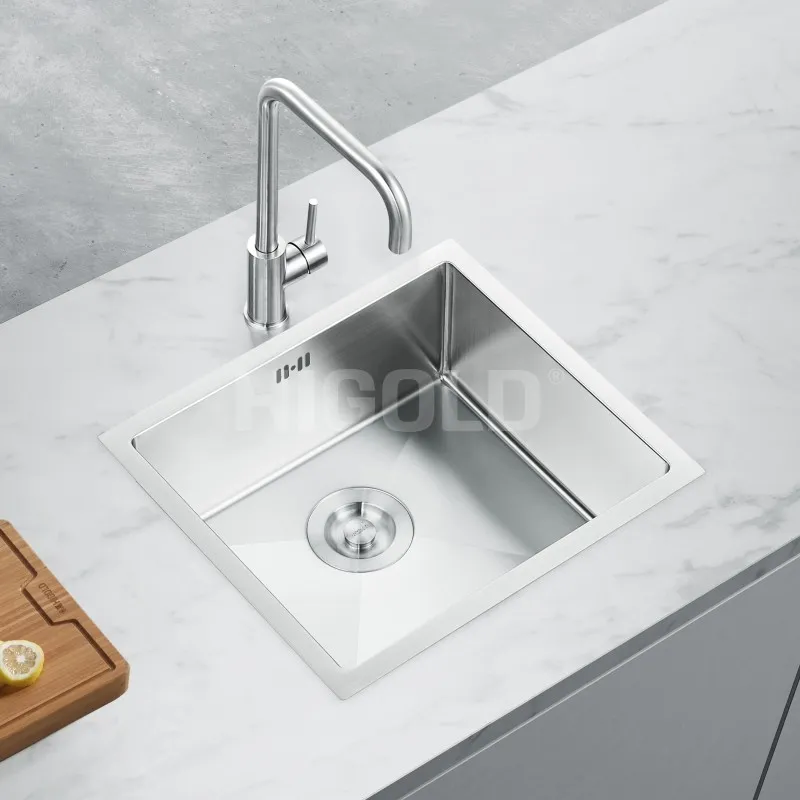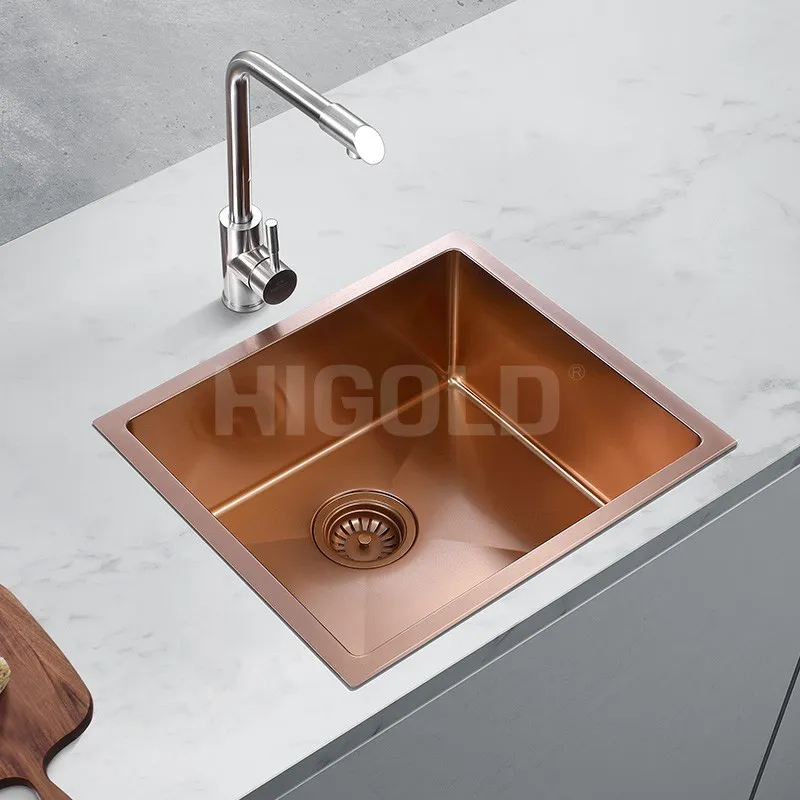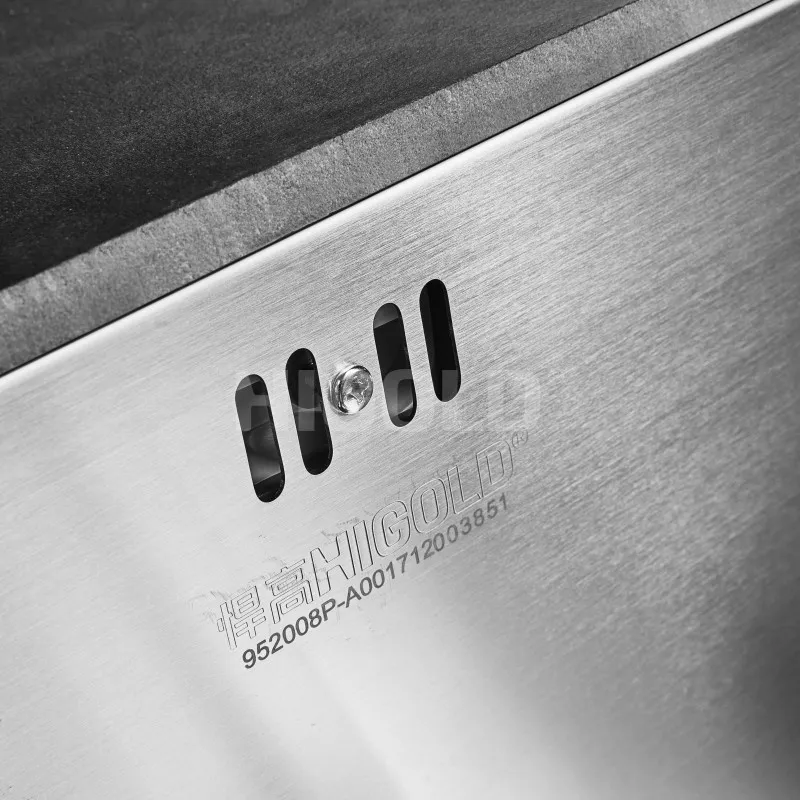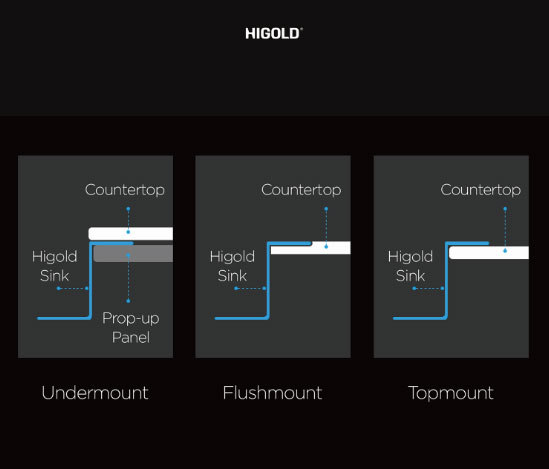For consumers seeking modern minimalist style and high-end design, undermount kitchen sinks have become a popular choice for many families due to their clean, seamless appearance and superior cleanability. However, as this type of sink grows in popularity, many are also concerned about their vulnerability to breaking.
Unlike traditional sinks, undermount sinks have a hidden rim beneath the countertop, creating a more seamless connection. This also raises questions about their durability and fragility.
This article will analyze the vulnerability of undermount kitchen sinks from multiple perspectives, focusing on the impact of factors such as material properties on their durability. This systematic analysis will hopefully help consumers make informed choices about undermount sinks and avoid unnecessary damage from improper use.

What are the installation features of undermount kitchen sinks?
Unlike traditional top-mount sinks, undermount sinks feature a rim that is installed below the countertop, while the sink itself is recessed into the lower portion. This creates a seamless, integrated look. This design not only enhances the kitchen's aesthetics but also makes the countertop tidier and easier to clean.
Undermount sink installation requires special attention to the compatibility of the countertop and sink. Generally, undermount sinks are suitable for hard countertop materials such as granite, quartz, and stainless steel. During installation, it is crucial to ensure that the sink meets the countertop seamlessly and is securely fastened. This is crucial for the sink's stability and durability.
Are undermount kitchen sinks prone to breaking?
Undermount kitchen sinks are commonly made of different materials, such as stainless steel, quartz, ceramic, and composite materials. Each sink material has varying durability and impact resistance, thus impacting the risk of breakage.
1. Stainless Steel Undermount Sinks
Stainless steel sinks are one of the most common undermount sink materials. They are widely used in both home and commercial kitchens due to their corrosion, heat, and impact resistance. Stainless steel undermount kitchen sinks are particularly resistant to cracking. Due to their high toughness and ductility, stainless steel is less susceptible to brittle cracking even when subjected to impact. Thicker stainless steel sinks, in particular, are more resistant to the impacts and pressures of daily kitchen use.
However, it's important to note that while stainless steel sinks themselves are not prone to shattering, they can still dent or deform if subjected to strong impact or improper installation. In severe cases, this can lead to functional failure. Therefore, proper installation and proper use are crucial when installing a stainless steel undermount sink.
2. Quartz Undermount Sinks
Quartz sinks are typically made from a composite of natural quartz and resin, offering high hardness and scratch resistance, making them appear more durable. However, quartz sinks are relatively brittle. While they offer good heat and corrosion resistance, they can crack or chip under strong impact or significant external force.
Thus, while quartz undermount kitchen sinks are widely popular for their aesthetic and durability, their fragility warrants attention. During installation, special care must be taken to avoid impact.
3. Ceramic Undermount Sinks
Ceramic sinks are typically made from porcelain clay fired at high temperatures, resulting in a smooth surface that resists stains and is easy to clean. Ceramic sinks offer an attractive appearance and are heat-resistant, making them suitable for some high-end kitchen renovations. However, ceramic sinks are brittle and prone to cracking due to impact. This is especially true during installation, where the countertop is uneven or the sink is not properly secured. Ceramic sinks can crack or shatter due to vibration or external forces.
Therefore, when choosing a ceramic undermount kitchen sink, pay special attention to its fragile nature and ensure the sink is securely fixed and supported during installation.
4. Composite Sinks
Composite sinks combine the advantages of multiple materials, typically made from a blend of resin and mineral powders. These sinks offer excellent durability and corrosion resistance, while also offering a wide variety of colors and styles. While composite sinks are harder, they are less brittle than quartz and ceramic sinks, making them less prone to chipping.
However, composite sinks can still deform or crack when subjected to strong external forces, especially under extreme conditions. Therefore, when choosing a composite undermount kitchen sink, consider its impact resistance and proper handling.

Undermount Kitchen Sink: How to Install and Use It?
Installation and use are two key factors that influence the vulnerability of undermount kitchen sinks to breakage. Regardless of the sink's material, proper installation and proper use can effectively prevent sink damage.
1. Installation Specifications
When installing an undermount kitchen sink, ensure that the sink's rim is perfectly aligned with the countertop, avoiding excessive or uneven gaps between the two surfaces. The countertop should be professionally cut to ensure the sink fits snugly. Improper installation can cause the sink to become loose or incompletely secured, making it susceptible to external impacts, leading to breakage or damage.
In addition, during installation, ensure the support structure beneath the sink is stable. During installation, especially on wood or other softer materials, ensure the sink is properly supported or reinforced to prevent excessive or uneven pressure.
2. Proper Use
Although undermount kitchen sinks are highly impact-resistant, users should avoid dropping heavy objects directly into the sink, especially hard objects such as pots and pans. Excessive impact can damage the sink. Avoid hitting the sink surface with sharp objects to reduce the risk of damage.
Also, for brittle sinks like quartz and ceramic, avoid hitting the rim with force. Especially when cleaning or placing heavy objects, be careful and gentle to avoid unnecessary impact.

How to Prevent Undermount Kitchen Sinks from Shattering?
To ensure the lifespan of your undermount kitchen sink and prevent it from breaking or otherwise damaging, consumers can take the following precautions:
• Choose the Right Material: When selecting a sink, choose the right material based on your kitchen needs and budget. If you're looking for high impact resistance, stainless steel is recommended. If you're choosing a quartz or ceramic sink, pay special attention to its brittle nature and avoid heavy impacts.
• Ensure Professional Installation: Regardless of the material you choose for your undermount kitchen sink, hire an experienced professional. Ensure the sink is properly installed and securely fastened to prevent it from loosening or cracking during use.
• Avoid Excessive Impact: During daily use, minimize the sink from excessive impact. Avoid dropping heavy or sharp objects directly into the sink, especially for ceramic and quartz sinks.
• Regularly inspect your sink: Regularly inspect the installation and appearance of your sink to ensure there are no loose parts or gaps between the sink and the countertop. If any cracks or damage are found, repair or replace them promptly to prevent further problems.

What awards has Higold received for its kitchen products?
Higold has been honored with prestigious design awards, including the Red Dot and Red Star. Our sinks are not only functional but also stylish, appealing to high-end global markets. Whether you are a retailer looking for promotions, a wholesaler searching for low price deals, or a brand seeking ODM supply, Higold provides high-quality products with proven industry recognition.


